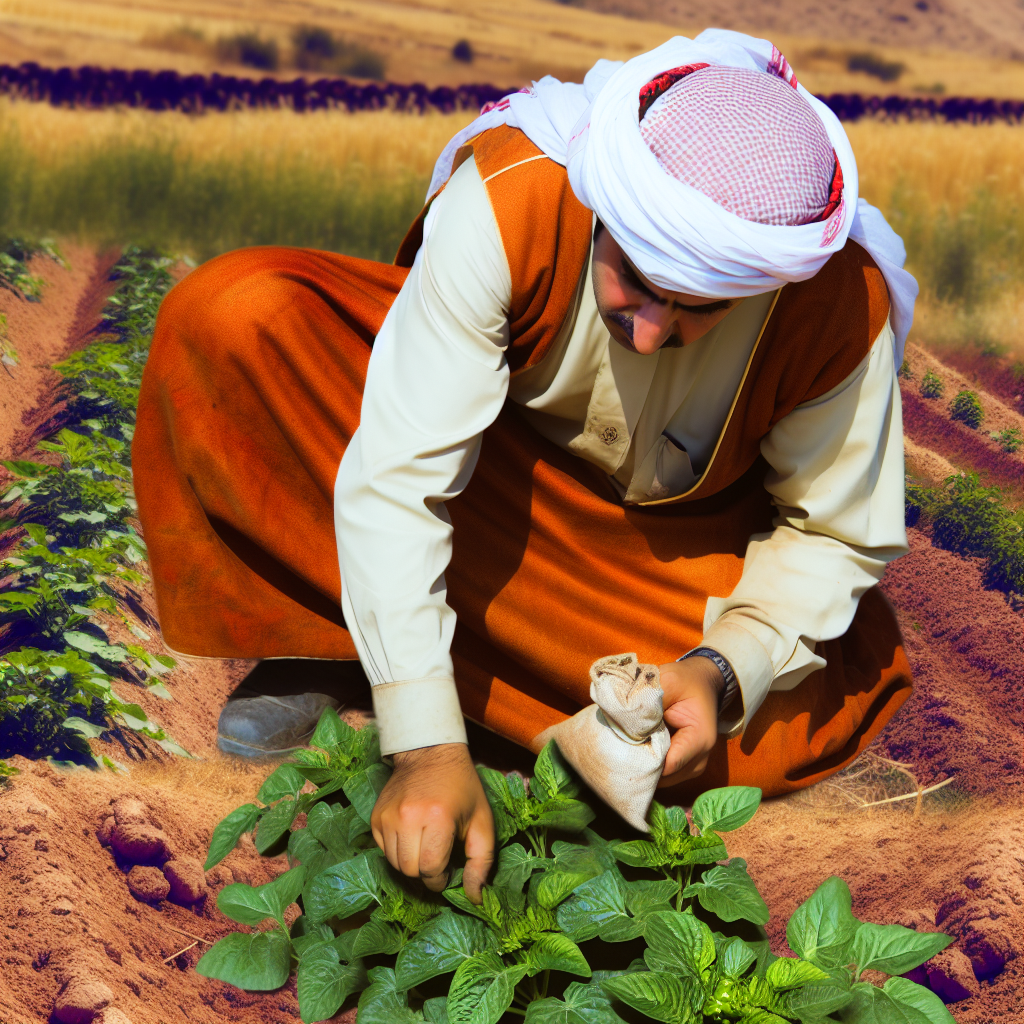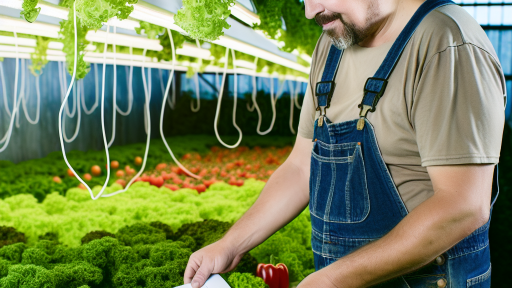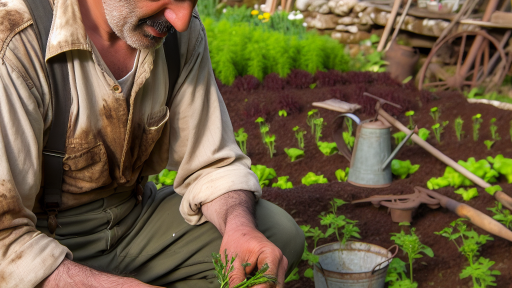Understanding Heirloom Varieties
Importance of Heirloom Varieties
Heirloom varieties are essential for biodiversity in agriculture.
They preserve genetic diversity, which supports resilient ecosystems.
These plants often have unique flavors and textures.
Furthermore, they foster traditional agricultural practices.
Farmers who grow heirlooms can adapt crops to local conditions.
Benefits of Growing Heirloom Varieties
Heirloom varieties offer numerous benefits to gardeners and farmers.
Firstly, they provide outstanding taste compared to commercial varieties.
Secondly, they often have better resistance to local pests and diseases.
This resistance reduces the dependence on chemical pesticides.
Moreover, heirlooms encourage sustainable farming practices.
Cultural Significance
Heirloom varieties connect us to our agricultural heritage.
Many heirlooms have historical stories tied to them.
Growing these plants helps keep cultural traditions alive.
Additionally, they can create a sense of community among gardeners.
Sharing heirloom seeds fosters connections between generations.
Transform Your Agribusiness
Unlock your farm's potential with expert advice tailored to your needs. Get actionable steps that drive real results.
Get StartedCommon Pests Affecting Heirloom Varieties: Identification and Impact
Identification of Common Pests
Heirloom varieties face threats from various pests.
Pests can severely impact their growth and yield.
Understanding pest identification is crucial for effective management.
Common Insect Pests
Homopterans such as aphids exhibit distinct characteristics.
These small insects often cluster on stems and undersides of leaves.
As a result, they can cause wilting and stunted growth.
Additionally, beetles like cucumber beetles ruin crops.
They often chew on leaves and bore into stems.
This behavior leads to reduced plant vigor and increased disease susceptibility.
Other Notable Pests
Thrips are tiny but harmful pests to consider.
They leave silvery trails on leaf surfaces.
This damage affects photosynthesis and overall plant health.
Furthermore, nematodes target root systems directly.
They cause galls on roots and hinder nutrient absorption.
As a result, plants may show stunted growth or wilting.
Impact of Pests on Heirloom Varieties
Pests can drastically affect heirloom crop yields.
Crop failure often results from prolonged pest infestations.
Consequently, farmers may face economic hardships.
Effects on Biodiversity
Pest infestations can threaten genetic diversity.
Many heirloom varieties possess unique traits.
Loss of these plants reduces overall biodiversity.
Long-Term Sustainability
Persistent pest problems may lead to increased pesticide use.
This, in turn, poses environmental risks.
Additionally, it can harm beneficial insects and soil health.
Showcase Your Farming Business
Publish your professional farming services profile on our blog for a one-time fee of $200 and reach a dedicated audience of farmers and agribusiness owners.
Publish Your ProfileThus, effective pest management strategies are essential.
Cultural Practices for Pest Management
Importance of Cultural Practices
Cultural practices play a crucial role in pest management.
They help maintain healthy heirloom varieties in gardens.
Implementing these practices reduces the need for chemical interventions.
Crop Rotation
Crop rotation can disrupt pest life cycles effectively.
This method prevents pests from establishing themselves in one location.
For instance, changing the planting site of tomatoes yearly helps reduce tomato hornworm populations.
Sanitation Measures
Sanitation is essential for preventing pest infestations.
Regularly remove debris and fallen fruits from your garden.
This practice minimizes hiding places for pests.
Keep tools and equipment clean to avoid transferring pests between plants.
Companion Planting
Companion planting enhances pest control naturally.
Certain plant combinations repel pests while attracting beneficial insects.
For example, marigolds can deter nematodes when planted near tomatoes.
Furthermore, basil planted with peppers can repel aphids.
Water Management
Proper watering practices prevent pest infestations.
Overwatering can create a breeding ground for pests like fungus gnats.
Water in the morning to reduce humidity during the cooler evening hours.
Mulching
Applying mulch can suppress weed growth and conserve moisture.
This practice also creates a barrier against certain pests.
Organic mulches, like straw or wood chips, can enhance soil health.
Pest Monitoring
Regular pest monitoring is vital for effective management.
Inspect plants frequently for any signs of pest damage.
Identifying pests early allows for timely responses.
Use sticky traps to monitor and assess pest populations.
Beneficial Insects
Attracting beneficial insects can significantly aid pest management.
Ladybugs and lacewings are excellent natural predators of aphids.
Planting a variety of flowers can create habitats for these helpful insects.
Explore Further: Enhancing Biodiversity with Heirloom Varieties
Companion Planting: Natural Pest Deterrents for Heirloom Crops
Understanding Companion Planting
Companion planting involves cultivating different plants in proximity for mutual benefit.
This method enhances growth, deters pests, and attracts beneficial insects.
For heirloom varieties, companion planting offers a natural defense mechanism against pests.
Choosing Compatible Plants
Identify plants that complement each other in nutrient requirements and growth habits.
For example, tomatoes thrive alongside basil, which repels pests.
Another great pair is carrots and onions, which can deter root-feeding insects.
Benefits of Companion Planting
Companion planting improves biodiversity and soil quality.
It can reduce the reliance on chemical pesticides.
Additionally, this practice can increase yields and overall plant health.
Popular Companion Planting Combinations
- Marigolds with squash to repel squash bugs.
- Nasturtiums with cucumbers to deter aphids.
- Radishes with pumpkins to prevent pests.
Experimenting with various combinations can lead to surprising results.
Implementing Companion Planting in Your Garden
Start by researching which plants grow well together.
Showcase Your Farming Business
Publish your professional farming services profile on our blog for a one-time fee of $200 and reach a dedicated audience of farmers and agribusiness owners.
Publish Your ProfilePlan your garden layout to strategically position companion plants.
Monitor the interactions between different plant species as they grow.
Using Companion Planting to Protect Heirloom Varieties
Utilizing companion planting can protect heirloom varieties effectively.
This method enhances your garden’s resilience against pests.
Ultimately, embracing natural solutions leads to healthier crops.
Explore Further: Maximizing Yields in Hydroponic Systems
Organic Pesticides: Safe and Effective Solutions for Protecting Heirlooms
Understanding Organic Pesticides
Organic pesticides are derived from natural sources.
They offer a safer alternative to synthetic chemicals.
Gardeners can use them without harming beneficial insects.
Additionally, they help preserve the ecological balance.
Types of Organic Pesticides
Many organic pesticides exist for various applications.
- Neem oil disrupts pest reproduction.
- Botanical insecticides target specific pests.
- Diatomaceous earth damages insect exoskeletons.
- Insecticidal soaps suffocate soft-bodied insects.
Each type serves a unique role in pest management.
Application Techniques
Proper application ensures maximum effectiveness.
First, identify the pests before treatment.
Select the appropriate organic pesticide for your needs.
Spray during calm weather to reduce drift.
Furthermore, cover all plant surfaces for thorough coverage.
Lastly, follow the manufacturer’s instructions carefully.
Combining Techniques for Best Results
Integrating organic pesticides with cultural practices enhances effectiveness.
Regular monitoring helps track pest populations.
Encouraging natural predators also aids in control.
Crop rotation can prevent pest establishment in the soil.
Lastly, keeping plants healthy promotes resilience.
Uncover the Details: Pest Management in Hydroponic Farming

The Role of Diversity: Planting a Variety to Reduce Pest Pressure
The Importance of Biodiversity
Biodiversity plays a crucial role in agriculture.
Diverse crops can create a more resilient ecosystem.
This diversity helps to minimize pest outbreaks.
When multiple plant species coexist, pests find it harder to thrive.
Furthermore, biodiversity affects the natural predator populations.
Selecting Heirloom Varieties
Heirloom varieties often have unique traits.
They adapt well to local conditions and pests.
By planting a range of heirloom crops, you increase genetic diversity.
This allows for greater resilience against pests.
Additionally, these varieties contribute to flavor and nutrition.
Companion Planting Techniques
Companion planting can reduce pest pressure significantly.
Certain plants can repel pests or attract beneficial insects.
For example, basil can deter flies and mosquitoes.
Marigolds are known to repel nematodes and aphids.
Integrating these plants into your garden can enhance diversity.
Rotating Crops to Disrupt Pest Life Cycles
Crop rotation is a classical method for pest management.
Showcase Your Farming Business
Publish your professional farming services profile on our blog for a one-time fee of $200 and reach a dedicated audience of farmers and agribusiness owners.
Publish Your ProfileIt prevents pests from establishing and multiplying.
By changing the plants grown in specific areas, pests can be starved of their food source.
This approach also improves soil health and fertility.
Monitoring and Adaptation
Regular monitoring helps identify pest populations early.
Adaptation strategies can then be implemented effectively.
Consider using natural pest control methods when possible.
For instance, introducing beneficial insects can help manage pest outbreaks.
Ultimately, staying vigilant and flexible enhances your garden’s health.
Gain More Insights: How to Start an Heirloom Vegetable Garden
Soil Health: Building Resilience Against Pests in Heirloom Varieties
The Importance of Soil Health
Soi health plays a crucial role in pest management.
It directly influences crop growth and resilience.
Healthy soil promotes strong plants that can better withstand pests.
Additionally, it encourages beneficial organisms that deter harmful species.
Practices to Enhance Soil Health
One effective practice is maintaining organic matter levels.
Adding compost increases nutrient availability in the soil.
Cover cropping can protect the soil and enhance its structure.
Furthermore, rotating crops prevents pest buildup in the soil.
These practices foster a diverse soil ecosystem, improving overall health.
Utilizing Natural Amendments
Natural amendments enrich the soil without chemicals.
For instance, biochar improves soil aeration and water retention.
Incorporating worm castings boosts microbial activity.
Applying green manure adds nutrients and organic matter back to the soil.
Using these amendments enhances the resilience of heirloom varieties.
Monitoring Soil Health Regularly
Regular soil testing reveals nutrient levels and pH balance.
This information guides amendments and practices effectively.
Additionally, observing soil texture and structure provides insights into its health.
Using this knowledge, farmers can adapt their management approaches promptly.
The Role of Biodiversity
Biodiversity in soil organisms supports robust pest management strategies.
Encouraging diverse plant life promotes a balance of beneficial insects.
Beneficial nematodes and insects help control pest populations naturally.
Implementing integrated pest management (IPM) techniques bolsters these efforts.
Community Support and Resources
Engaging with local farmers can enhance knowledge sharing.
Workshops on soil health and pest resilience are beneficial opportunities.
Additionally, collaborating with agricultural extensions can provide valuable resources.
These connections strengthen farming practices and promote healthy heirloom varieties.
Education and Community Involvement
Workshops on Heirloom Preservation
Participating in workshops enhances knowledge about heirloom varieties.
Community leaders frequently host sessions focusing on pest management techniques.
These workshops often feature expert speakers from local agricultural societies.
Attendees receive hands-on training to control pests effectively.
Moreover, participants can share their own experiences and tips.
Showcase Your Farming Business
Publish your professional farming services profile on our blog for a one-time fee of $200 and reach a dedicated audience of farmers and agribusiness owners.
Publish Your ProfileResource Sharing Among Gardeners
Local gardening groups provide valuable resources to members.
These resources include pest management guides and organic solutions.
People can easily access shared seed libraries for heirloom varieties.
Additionally, online forums foster discussions about pest control strategies.
Members frequently exchange stories about successful cultivation techniques.
Building a Supportive Community
Creating a community network strengthens heirloom preservation efforts.
Regular meetings facilitate connections among local gardeners.
Such gatherings encourage collaboration on pest management initiatives.
For instance, community members can organize joint clean-up efforts.
Working together significantly boosts local biodiversity.
Educational Partnerships
Forming partnerships with educational institutions benefits community gardens.
Schools often implement programs exploring heirloom varieties’ benefits.
Students can participate in hands-on gardening experiences.
Such programs teach youth about sustainable practices and ecology.
Furthermore, these initiatives can inspire future gardeners.
Additional Resources
Companion Planting & Botanical Pesticides: Concepts & Resources …




